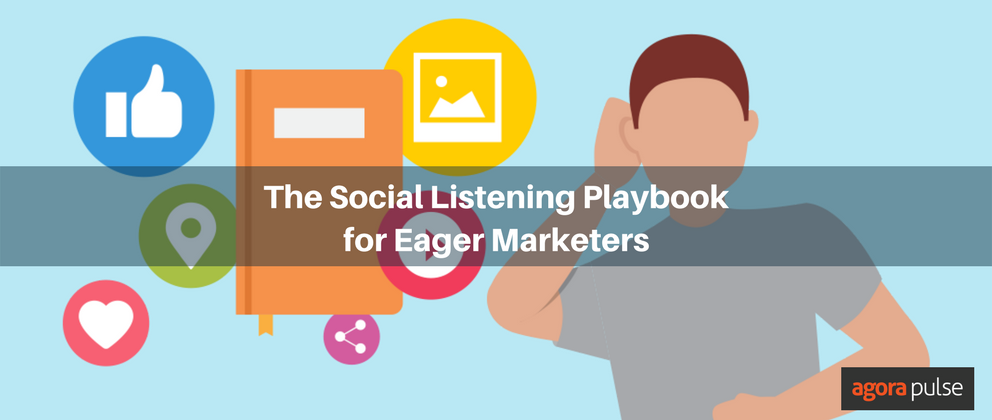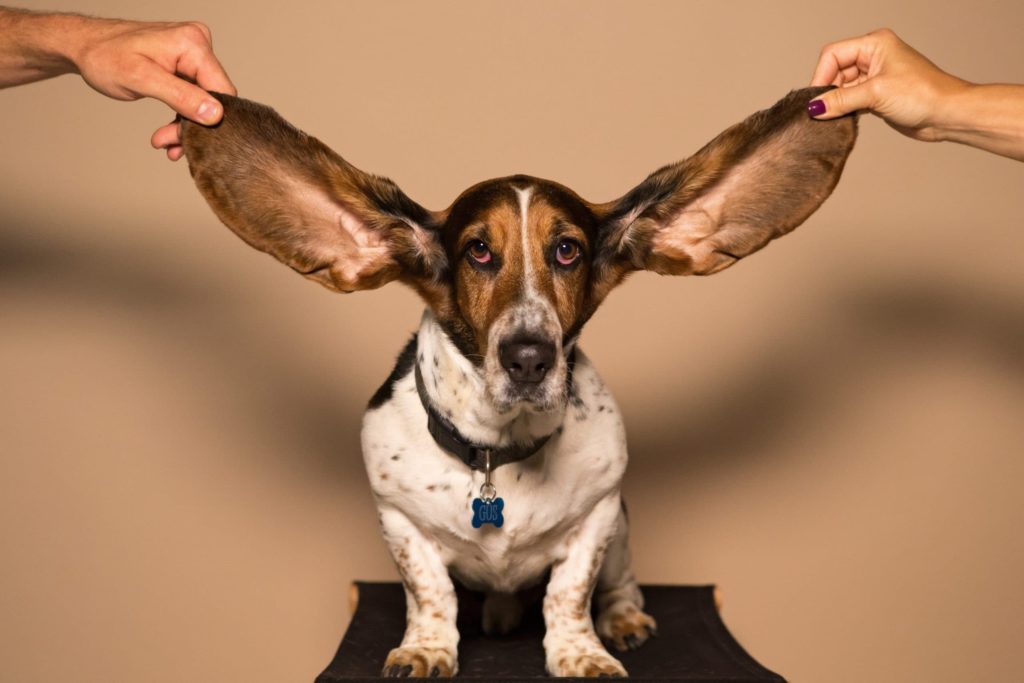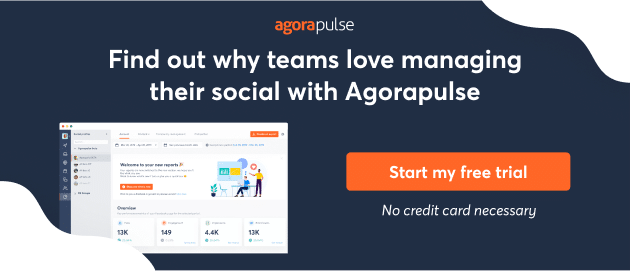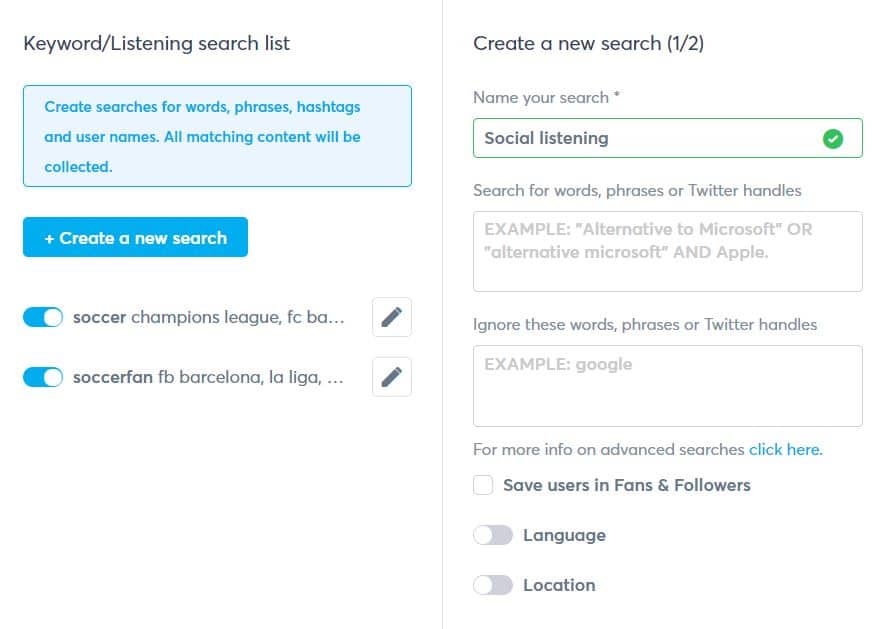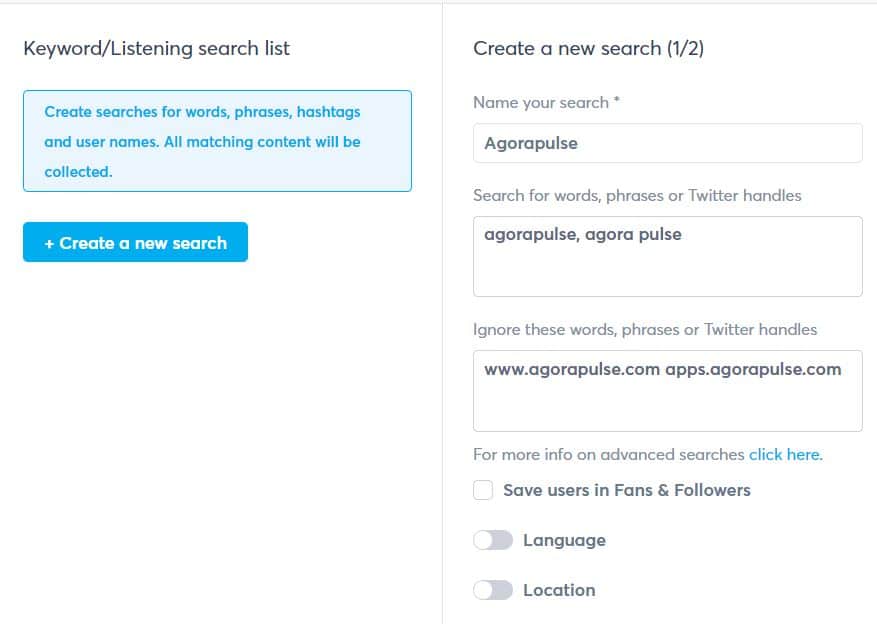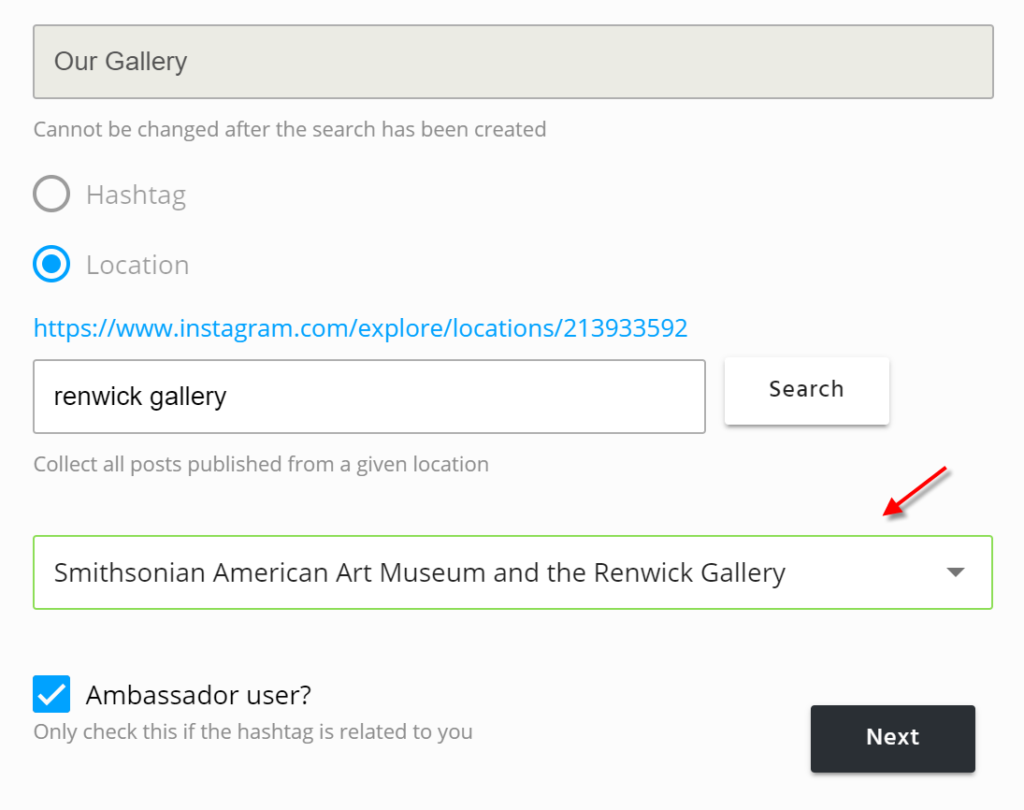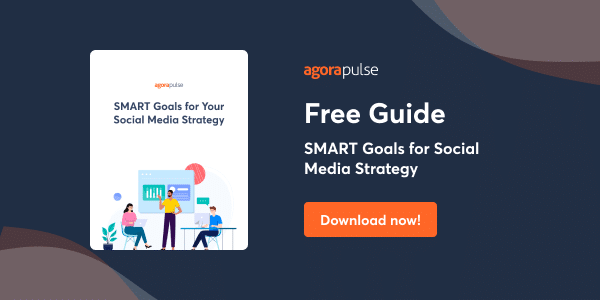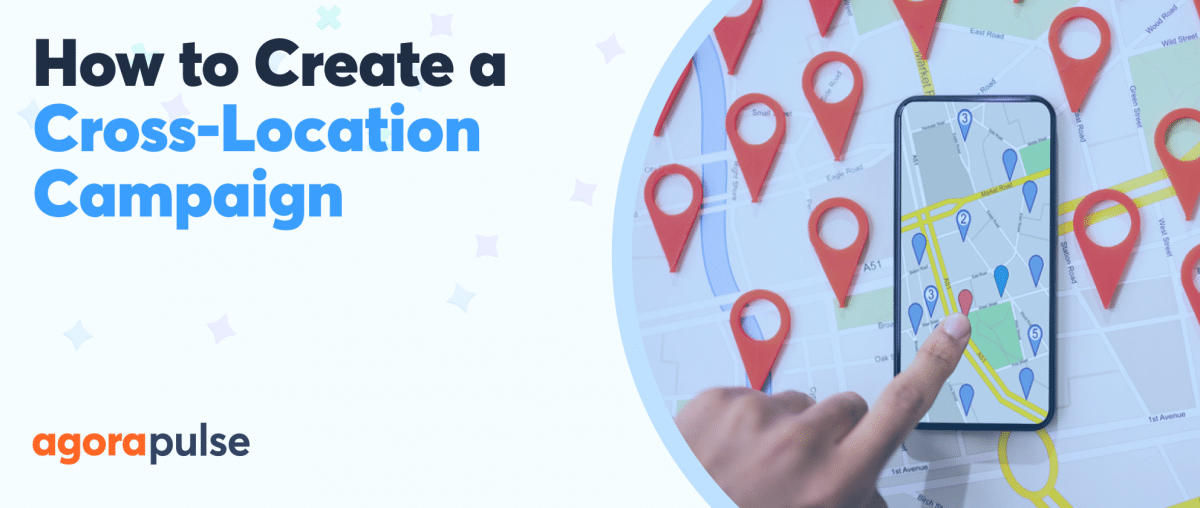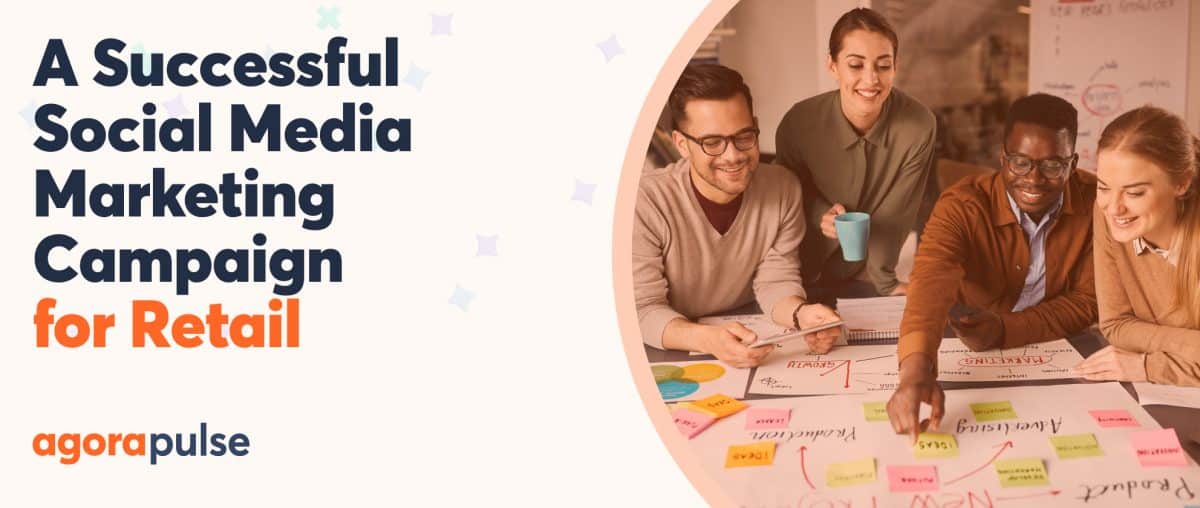If you’ve been working with social media for a while now, you’ve come across the term “social listening.” You might have even been asked by a client or boss to compile a social listening report or set up some conversation monitoring.
Social listening differs from standard social media monitoring in that it goes beyond “owned” conversation (such as on your Facebook business page) to learn from the “earned” conversation (across the full spectrum of public social media).
Table of Contents
Why brands use social listening
A teacher once smugly told me we have two ears and one mouth, and they should be used in that ratio. (He wasn’t wrong, but he was smug.)
You can learn a lot from listening in on the conversations happening around your brand.
Social listening is just as important for your social media strategy as posting relevant and interesting content. You learn what makes your audience tick, how they talk about you, and even discover great user-generated content.
Think of social media like one giant focus group.
In fact, it’s better than a focus group because the people talking are already actively engaged with your brand, and their opinions and observations are offered unsolicited.
Social listening keeps you on the pulse of your audience and helps you find new audiences you might not have tapped into yet.
It can also be used to see what people are saying about your competitors, giving you a sneaky insight into their customers’ conversations across the social sphere.
Related Post: Social Media Marketing 101
How to Get Started With Social Listening
Social listening can be done manually or automated with platforms that allow you to set up hashtags, handles, and keywords to monitor.
Doing it manually on social platforms like Facebook and Twitter is very time-consuming and can be challenging with standard search features. However, it might be necessary in some cases like monitoring specialized forums and niche Facebook Groups where a particular conversation is emerging.
Listening on Twitter
Due to its open platform, and short-form style posts, Twitter is the biggest and best social pool where listening should occur.
Agorapulse offers the flexibility to monitor your own brand, as well as others, in a bespoke feed from Twitter. The relevant posts it brings back can then be tagged and assigned to the relevant team member to handle. That goes for Instagram geo-monitoring too.
What Should You Be Listening For?
Brand mentions of both your handle and hashtag
This is fairly straightforward! Any @Twitter handles you have for your brand, and also your brand name in #hashtag format, like @BMW and #BMW counts.
Branded and unbranded hashtags relevant to your brand
Branded hashtags are what you’ve pushed out and encouraged people to share as part of your social strategy, or as part of a campaign — think Coca Cola’s #ShareACoke.
Unbranded relevant hashtags are generally user-generated, or “organic,” hashtags that have attached to your brand or industry. For example, Coca Cola might want to monitor the #sugartax conversation.
The names of your products
Think of as many variations as possible, including common misspellings or shortened versions. If your products contain multiple words you should monitor them as phrases as well as in hashtag format.
Agorapulse tends to be misspelled from time to time, so they’ve set up a search for both Agorapulse and Agora pulse.
Instagram locations for any physical stores or events
Social listening platforms like Agorapulse allow you to monitor particular locations on Instagram for mentions of keywords or Instagram handles. This is particularly relevant for brands that have physical locations, events, or launches out in the real world!
Your competitors’ handles, hashtags, keywords, and products
Once you’ve set the above up for your own brand, apply it across to your top competitors. This will give you a live listen of their audience and activities across social media.
The handles of any key people in your company (CEOs, spokespeople etc.)
If your brand is a large to medium presence, the top dogs in your organization are also relevant to your brand’s listening strategy. Tesla might want to know what people think of @ElonMusk after a big announcement, for example.
Trends and industry chatter using key phrases
This is open-ended, and can be anything from simple keywords, through to very particular combinations of key phrases that indicate a relevant conversation to monitor. Eg. using keywords “virtual reality” AND “gaming” to narrow the scope of a broader conversation around virtual reality.
If you’re just getting started, try sticking to the strictly relevant stuff. Direct conversation occurring about your brand is easiest because you already know what to look for. I call this “looking in the mirror.”
Once you have a grasp on what the conversation about your brand looks like, you can start “looking out the window” and listening to what is being discussed in the space around your brand. If you’re using a listening platform like Agorapulse, you can even create searches for posts with a positive or negative sentiment!
Real-life example
An example of these principles in action was a social listening report I ran for a well-known canned tuna brand from Australia. Truly riveting stuff, I know.
They wanted to know how consumers discussed tuna online. Once I was done compiling all their brand mentions, I then ran keywords and mentions for their main competitors. This allowed me to see what social share of voice the client’s brand had in comparison.
I could now look “out the window” with some good understanding and context around the product category.
It turned out that people had a lot of opinions on tuna, and they were more than happy to express them. I moved into a broader conversation around tuna. How people talked about it: as a snack, as a source of healthy protein, as a totally gross smell in the office.
From this exploration of the conversation, I found out the conversation around tuna had shifted from just a stinky snack to part of the “fitspo” movement on Instagram.
I gave this insight back to the client with examples of posts from each category of conversation. They were shocked they hadn’t thought of targeting the fitness community before and could now adapt their messaging strategy with some concrete reasoning to justify the shift!
Filtering Through the Noise
Finding actionable insights is the goal for social listening, but it isn’t always easy.
Some brand conversations are much more prevalent than others … It definitely helps if your product is interesting and not just functional!
If your brand is a home building material supplier you might have more trouble finding content than say, a flavored milk brand. (Trust me, I’ve conducted social listening reports for both.)
The other challenge is shifting through posts when there’s a huge volume of conversation coming back.
If you ran brand mentions for Ford cars, and just used “Ford” as a keyword, you would bring back opinions on Harrison Ford’s latest movie and a hundred other uses of the word.
Agorapulse allows you to use negative keywords to filter out irrelevant conversations, and it saves you the grueling task of doing it manually. (See the earlier search example of Agorapulse and Agorapulse to get a sense of how to set up such a search.)
Getting a good quality feed of posts might take some time, but once you set it up correctly you’ll be tuned into the greatest audience insight any marketer could dream of!
In Conclusion
Get started with these simple social listening tips and you’ll be able to add “social analyst” to your resume in no time.
* * *
Get started on saving time and energy on your own social media management! Check out our free trial of Agorapulse to help you schedule, track, and measure all your social media efforts.
